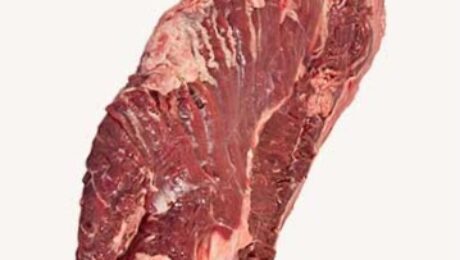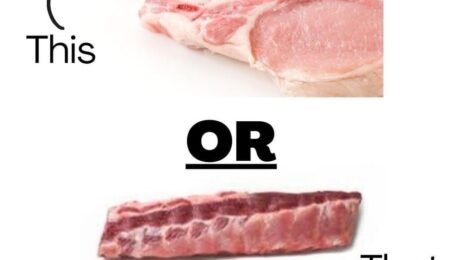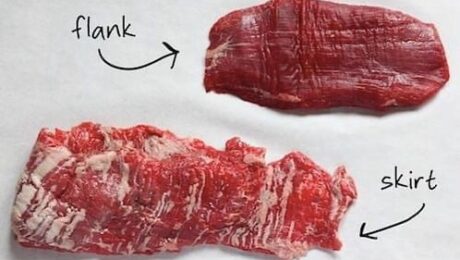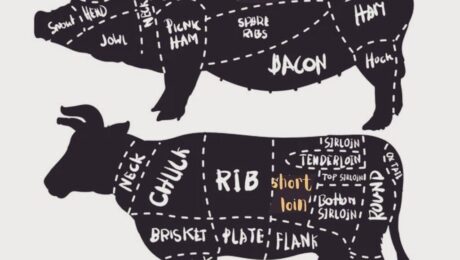TYPES OF FAT
Caul Fat: Anatomically speaking, caul fat is the thin, lacy membrane of an animal surrounding the internal organs, known as the greater omentum. This type of fat is sometimes called lace fat, fat netting, omental fat, or crépine, its French name. It’s used as a casing for other meat preparations like roasts, sausages, or anything you want to add decadent flavor to.
Fatback: This comes from the back of the pig, includes the shoulder and rump areas, and is the thick layer of fat directly underneath the skin. Once rendered, it produces a lard that’s slightly yellow in color and it has a stronger flavor than leaf fat. It’s great for frying or sautéing.
Leaf Lard: This is the fat from around the animal’s kidney’s and is the “cleanest” fat on the whole animal. It’s also the healthiest. Once rendered, it produces a lard that’s white in color with a milder odor and flavor, making it ideal for use in pie crusts and pastries.
***IMPORTANT NOTE: The health benefits of lard do not apply to all lard from all animals. Fat is where a lot of the bad stuff is stored and concentrated (ie, chemicals, additives, by-products of junk ingredients, boar taint, etc). For that reason, we strongly suggest rendering lard only from responsibly raised animals fed a species-appropriate diet.
- Published in Meat Cuts
RENDERING LARD/TALLOW
(& Make Cracklings)

Supplies Needed:
•Animal Fat
•Glass canning jars with 2 piece canning lids
•Heavy bottomed pot (a cast-iron Dutch oven is perfect)
•Jar funnel
•Small metal strainer
•Clean cotton cloth or coffee filter
•Ladle
•Slotted spoon
•Wooden or metal stirring spoon
How to Render Lard/Tallow:
•Grind your fat using a meat grinder (or chop your fat into small pieces).
-•Use a clean, dry, heavy-bottomed pot and place it on the stovetop on LOW heat for the entire process. Repeat to yourself 3 times… LOW AND SLOW.
•Put a small amount of chopped or ground fat into the bottom of your cool pot and turn the pot on low, stirring constantly until the pot has a thin layer of melted fat across the entire bottom. Add more fat if necessary.
•Add the rest of your fat and stir to coat with the already melted fat.
•Repeat again… LOW and SLOW.
•Stir occasionally to avoid scorching.
•Continue cooking and stirring until there are no longer any bubbles and the cracklings (leftover chunks) are a nice light golden brown.
•Scoop out the cracklings with a slotted spoon onto a plate covered with a clean cotton cloth or a paper towel to drain. •Salt to taste and enjoy warm as a snack. •Store cracklings, once completely cooled, loosely packed in a ziplock bag in the freezer.
•Wash and dry glass jars and keep warm. •Set the canning funnel in the still warm jar, the metal strainer in the canning funnel, and line with a clean cotton cloth, muslin, or a coffee filter.
•Turn off the heat source.
•Carefully (it is HOT!!) ladle the melted fat into the jar through the cloth and strainer to remove any remaining bits of cracklings.
•Fill the jar and immediately cap each jar.
•Set jars aside to cool.
•Store lard in a cool, dark pantry or in the refrigerator or freezer. Once open, it is best to use lard within 1 week if left at room temperature, but it will remain good for up to a year, open, in the refrigerator.
For a video demonstration visit:
- Published in Meat Cuts
I have recently learned about convertible refrigerator/freezers

This. 



This. Is. A. Game. Changer.
Enter meat for wet aging at 34-40 degrees, dial it down for freezing once you’re done aging. You can age longer with the lower temp options AND you don’t have to transfer all that meat to the freezer after aging! And they aren’t super expensive! I’ll be getting one for myself once it’s time to restock the freezer. There are several brands at all
- Published in Storage and Prep
The Mock Tender
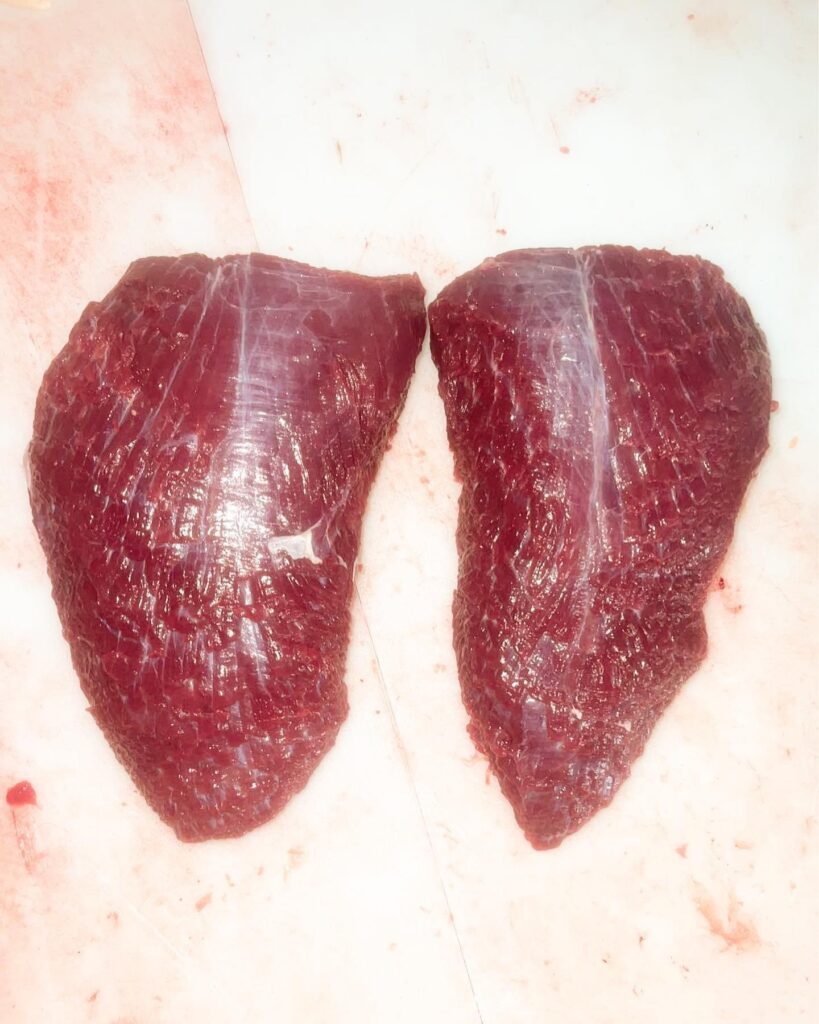
This cut comes from the other side of the shoulder blade, also know as the ‘shoulder tender’ and about 100 other aliases. It is opposite of the flat iron on the shoulder blade (chuck portion), so if you received flat iron steaks from me, you likely got these babies too!
The mock tender’s appearance may give you tenderloin vibes, but don’t let that fool you. This cut is best cooked low and slow. I recommend braising for best results. It has a rich, beefy flavor and is generally very lean. It also works well in stews or soups. If you want to slice into steaks for the grill, consider a mallet tenderizer and some acidic marinade.
There are only 2 per animal, so make sure to savor them!
- Published in Meat Cuts
TRI-TIP

The name is in reference to its triangular shape and its placement at the tip of the Sirloin primal. It is also known as the ‘Triangle Roast’ and ‘Bottom Sirloin Roast’.
The Tri-Tip is a flavor-filled favorite for a reason — it looks like steak, slices like brisket, and yet it has the beefy flavor of a sirloin. Cooked right and carved across the grain, it is moist and succulently tender with an easy chew. It does have a good amount of fat on the cap and some moderate marbling, which offers a recognizable buttery taste that usually comes from more expensive cuts like the Ribeye.
Back in 1950’s California, a handful of butchers began spit roasting the tri-tip alongside ready to go hamburgers, and it quickly became a new favorite and lucrative ‘grab and go’ hot food offering for the masses. It is now established as a BBQ and smoker favorite among the West coast.
With solid flavor and so much meat on offer, preparation can be as involved or as easy as you want it to be.
The most popular method is a dry rub before smoking or a strong marinade that will battle the big beefiness of the meat. *I recommend marinading if cooking it over medium.
But, if you like things simple, you need only a good seasoning with salt and pepper in preparation to cook it in the oven, or just salt if placing it on the grill.
Cut into steaks or kept as a whole roast, this cut is truly incredible either way and I love the versatility!
- Published in Meat Cuts
What is the Hanger Steak?

A hanger steak, also known as the butcher’s steak or the hanging tenderloin, is a cut of beef steak prized for its flavor. This cut is taken from the plate (the upper belly of the animal) where it supports the diaphragm. In the past, it was known as the “butcher’s steak”, because butchers would often keep it for themselves rather than offer it for sale. This is because the general populace believed this to be a crude cut of meat, although it is actually one of the most tender.
The hanger steak resembles the flank steak in texture and flavor. It is a vaguely V-shaped pair of muscles with a long, inedible membrane running down the middle.
The only problem is… there’s only ONE per animal. 
Since this cut comes from a supportive muscle, rather than an active muscle, it is more tender, but can be tough when improperly prepared. The tenderness suffers when exposed to long periods of dry heat, but… who would dare insult such a ‘rare’ cut of beef by cooking it above medium rare anyway??? 
- Published in Meat Cuts
Bone-In Pork Chops-or-Baby Back Ribs
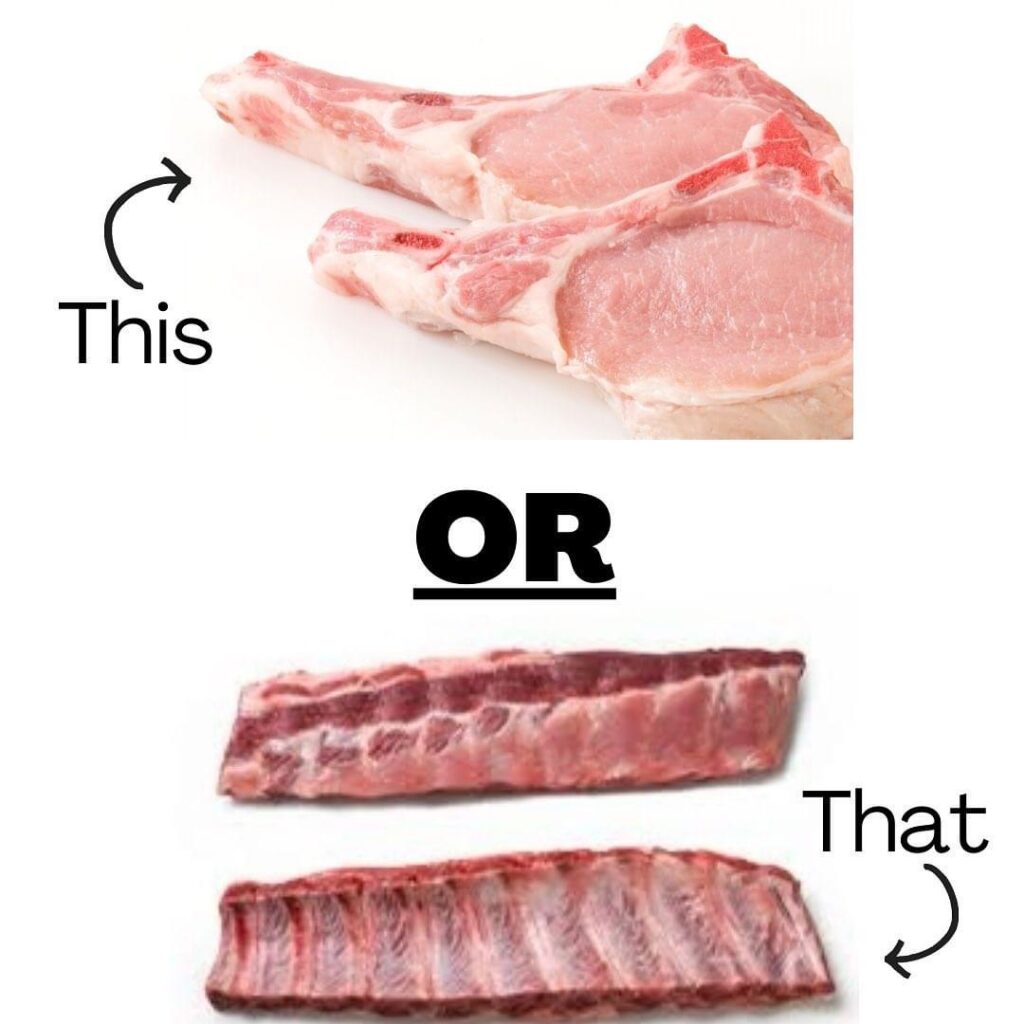
Baby Back Ribs are the same bones used in Bone-In Pork Loin Chops. This means you can have Baby Back Ribs + Boneless Pork Chops OR you can have Bone-In Pork Chops.
Indecisive? When cutting a whole animal, you can always cut half one way and half the other and try them all!
This right here is one of the biggest motivators behind Backyard Butchery.
The entire process of taking your animal to the butcher will result in raising their stress levels, no matter how you cut it. You’re separating your animal from its herd, then loading, traveling, and unloading at the butcher shop. But it doesn’t stop there. That animal is likely penned up in an area with a lot of other stressed out animals, without food, for up to 24hrs. It’s then sent through a chute, one at a time, to be dispatched. There’s a good chance your animal doesn’t want to walk straight towards that smell or be driven by strange people, in which case, an electric prod or tail twisting is the typical method to get them moving. And all of this is magnified if your animal is injured.
The problem with all of that, aside from putting your animal under enormous stress, is how that stress adversely effects the quality of your meat. The very thing you spent months or years preparing and caring for, can go right down the drain within 24hrs before slaughter.
Stress alters the meat quality, compromising the main attributes that involve it, like physical color, pH, WHC (muscle fiber density), WBSF (Warner-Bratzler shear force), which affects meat tenderness and meat quality, and lipid oxidation, among others.
This is why we come to you. Reduced stress = better tasting meat. Period.
- Published in Meat Cuts
Why do we call it the ‘Boston Butt’?
“If you believe the Internet, it came from shipping practices. Back in the colonial days, an article in Mental Floss explains, New England butchers took “less prized cuts of pork,” packed them into barrels, and shipped them off to other places. “The barrels the pork went into were called ‘butts'”, the author explains. “This particular shoulder cut became known around the country as a New England specialty, and hence it became the ‘Boston butt.'”
The New York Times and other reputable publications have repeated this story, but common sense should make us skeptical. Can you think of any other food named for its shipping container name? There are plenty of historical problems with this explanation, too. For starters, Virginia and North Carolina, not New England, were the centers of the pork trade in the 18th century until eclipsed by Cincinnati in the 1830s and then by Chicago. I have searched high and low but cannot find a single printed use of the term “Boston butt” in the colonial era or even before the Civil War.
The term originated in the late 19th century, as railroads transformed the commercial meat packing industry from regional to national. Butchers in different parts of the country had slightly different ways of carving up pigs and cows. Other states and cities lent their names to various cuts as national packers standardized butchering. Thus we have New York Strip steaks and St. Louis-style ribs—another favorite of Southern barbecue cooks.
The pork shoulder originally had several other geographically-named cuts. In the meatpacking trade, the Kansas City Sun reported in 1892, “careful requirements are formulated for standard sweet pickled hams and shoulders, New York shoulders, Boston shoulders, California hams, skinned hams, pickled bellies, etc.”
According to agriculture journals and meat cutter manuals from the early 20th century, New York shoulders had the shank “cut off above the knee, trimmed close and smooth, and square at the butt.” A “California ham” was not ham at all. It was “well-rounded at the butt, and trimmed as near to the shape of a ham as possible.” This latter cut was also known as the “picnic” (for reasons I’ve been unable to discover), and that term is now the standard for the lower part of the pork shoulder.
As the use of “butt” in these agricultural manuals suggests, the name of the Boston-style cut had nothing to do with shipping containers. Consider the butt of a rifle or a cigar butt. Either crafty Bostonians were putting all sorts of things in barrels and shipping them south, or “butt” was simply a generic term for, as Merriam-Webster phrases it, “the large or thicker end part of something”—the pork shoulder, in this case. “
- Published in Meat Cuts
What is a Flank Steak?

The flank steak is a lean, elongated muscle located below the loin. The meat is chewy here, as there are many fibrous tissues — when cooked right, this is no problem at all.
The flank steak has a low-fat content and rarely displays prominent marbling.
The Flank Steak is also known as the London Broil.
What is a Skirt Steak?
The skirt steak is an inner muscle that supports the cow’s diaphragm, and for many years, the membrane-like steak was discarded as offal. The frowned-upon steak was given to field workers for a cheap, energy-rich meal. This is the origin of the authentic fajitas!
The skirt steak, though, is kind of tough, so it benefits from an acidic marinade and cutting the meat against the grain is strongly advised.
Both of these cuts can be used interchangeably in recipes along with the Inner Skirts and Bavette Steak!
- Published in Meat Cuts
What do these have in common?
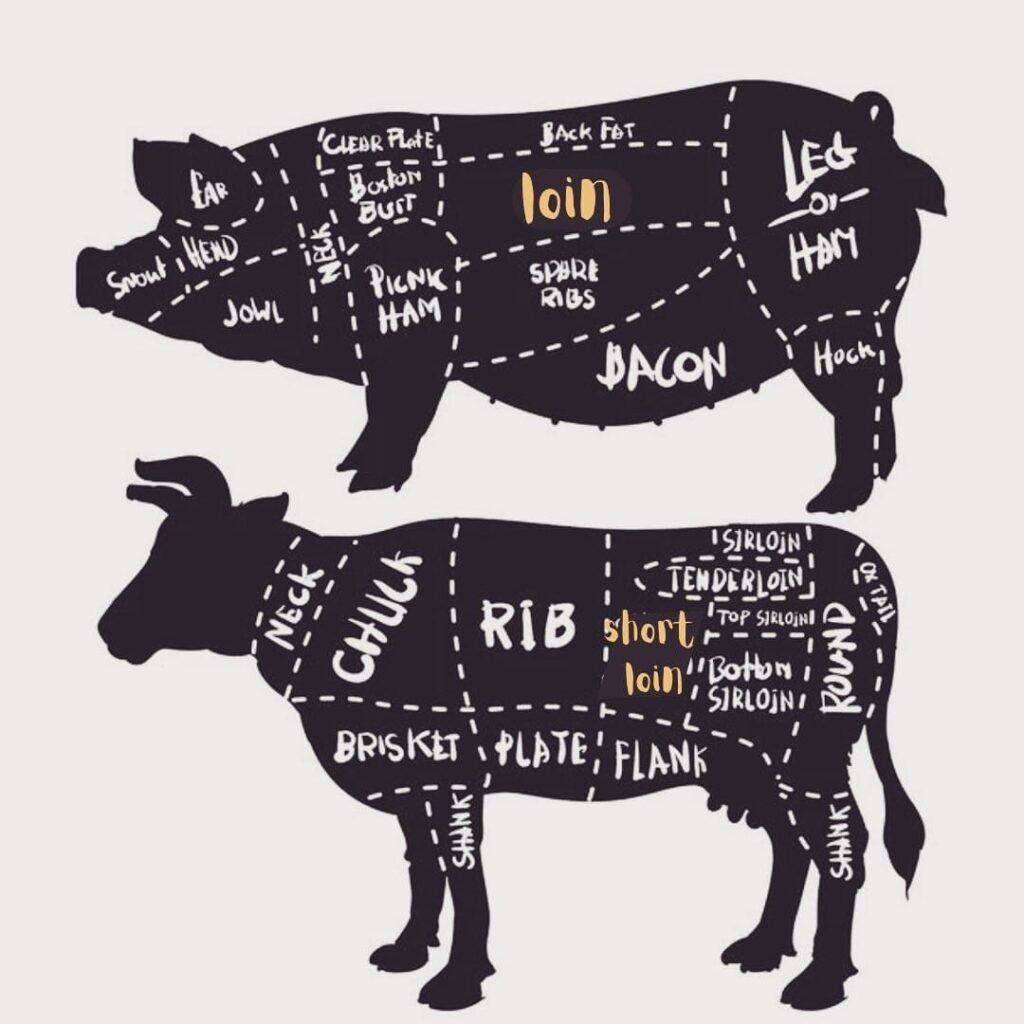
-Short Loin
-Backstrap
-Loin
-NY Strip
-Pork Chops
-Back Loin
-Lamb Chops
-Strip Loin
They are all the Exact. Same. Cut. Of. Meat.
Not to be confused with the tenderloin, the loin strip runs along the spine of the animal.
Call it what you want; I just call it “delicious”.

- Published in Meat Cuts







